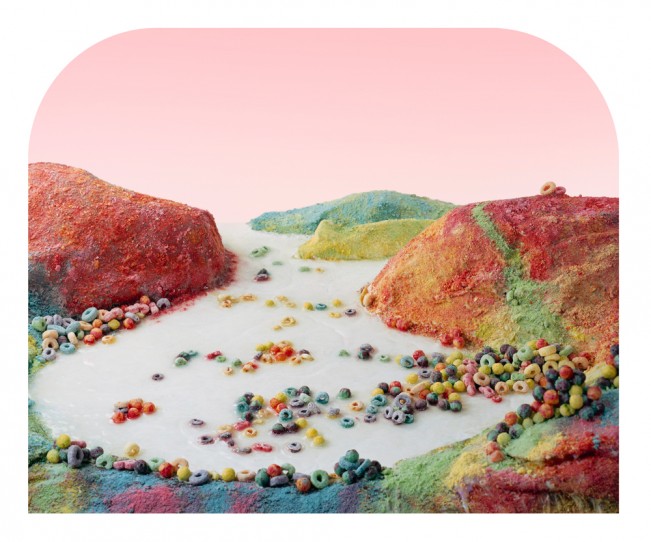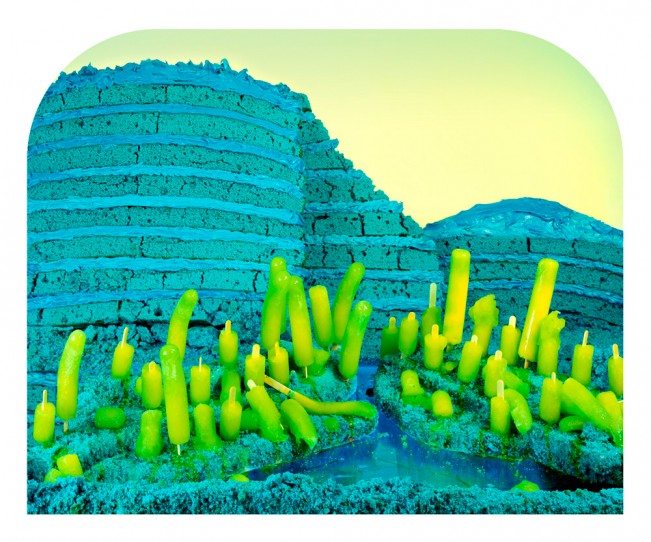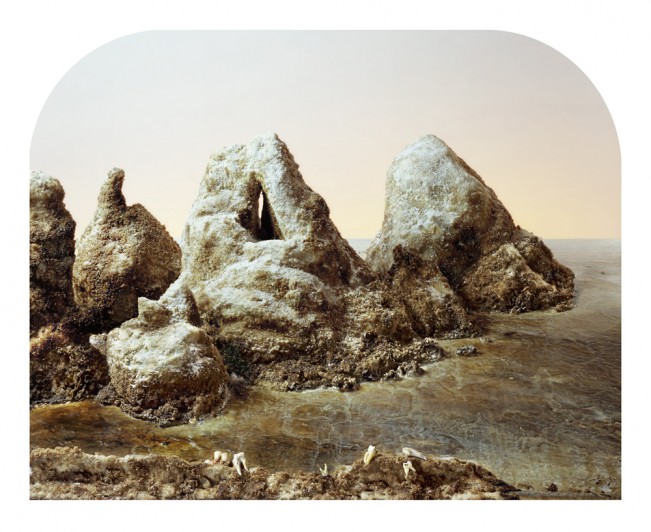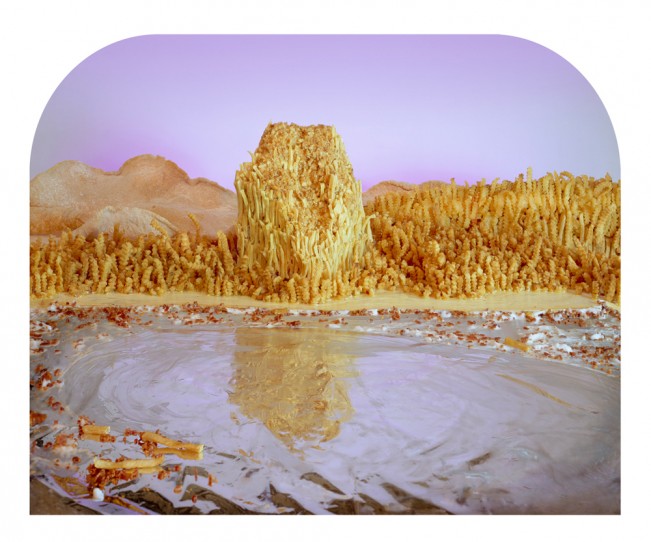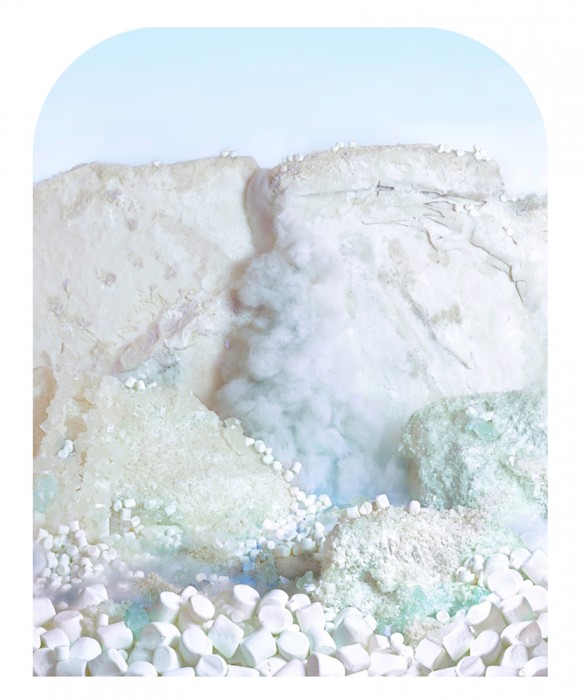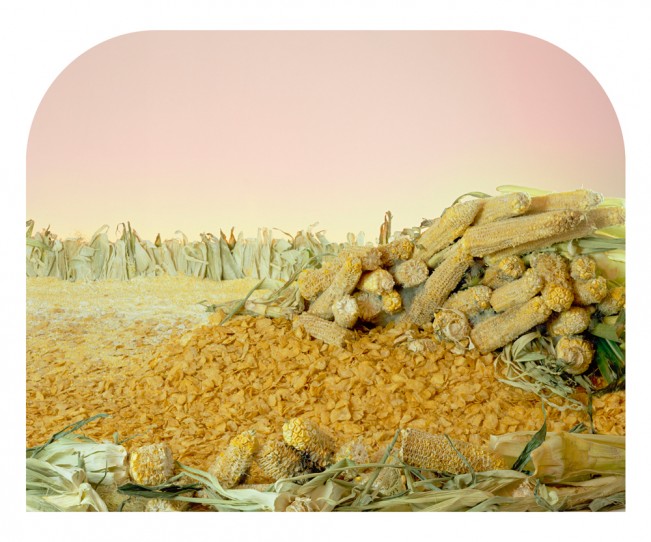Barbara Ciurej & Lindsay Lochman: Processed Views
In light of tomorrow’s Collaboration Exhibition, I thought it to be appropriate to share some collaborative work. Barbara Ciurej and Lindsay Lochman, from Chicago and Milwaukee respectively, have been collaborating as a team for over thirty years. Through this process they explore unified interests that strengthen their conversations and ideas between each other. Collaborating as a way of making photographs always poses questions of leaders and button pushers, but in the case of Barbara and Lindsay they develop and divide work evenly. Whether shooting together or separately, depending on the project, they always regroup to edit and exhibit together.
Today I’m excited to share their project Processed Views, which I have been privileged to see behind the curtain. Through constructed landscapes made strictly from foods that make the chubby kid inside me drool, Barbra and Lindsay develop a commentary on today’s food culture and its digression from all things natural. These handmade models are elaborate creations, holding their own as not only photographs but also sculptures.
Barbara Ciurej and Lindsay Lochman began working together on photographic projects when they met as students at the Institute of Design in Chicago. They have developed an extensive body of collaborative work, chronicling rites of passage and documenting the psychological landscapes and social architecture that surround us. The confluence of history, myth and popular culture is an ongoing theme in their collaborative work.
Exhibiting nationally and internationally, their photographs are in the permanent collections of the Art Institute of Chicago, Museum of Contemporary Photography, the Walker Art Center and the Milwaukee Art Museum. Ciurej is a photographer and graphic designer in Chicago. Lochman is a Milwaukee-based photographer and lecturer at the University of Wisconsin.
Processed Views
Processed Views interprets the frontier of industrial food production: the seductive and alarming intersection of nature and technology. As we move further away from the natural sources of our food, we head into uncharted territory replete with unintended consequences for the environment and for our health.
In this study of the landscape of processed foods, we reference the work of photographer, Carleton Watkins (1829-1916). His sublime views framed the American West as a land of endless possibilities and significantly influenced the creation of the first national parks. However, many of Watkins’ photographs were commissioned by the corporate interests of the day; the Central Pacific Railroad, the lumber, milling and mining industries. Watkins embodied the commonly held 19th century view of Manifest Destiny – the inevitability of America’s bountiful land, justifiably utilized and consumed by its citizens.
We built these views to examine consumption, progress and the changing landscape.
Posts on Lenscratch may not be reproduced without the permission of the Lenscratch staff and the photographer.
Recommended
-
Salua Ares: Absense as FormNovember 29th, 2025
-
Ricardo Miguel Hernández: When the memory turns to dust and Beyond PainNovember 28th, 2025
-
Pamela Landau Connolly: Columbus DriveNovember 26th, 2025
-
KELIY ANDERSON-STALEY: Wilderness No longer at the Edge of ThingsNovember 19th, 2025
-
Jackie Mulder: Thought TrailsNovember 18th, 2025

